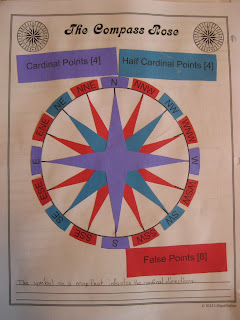What Should You Include?
Have you ever wondered what to put in a geography notebook? While the *exact* contents are totally up to you, perhaps you'd enjoy taking a peek inside some notebooks created by another family. Here are some of item we have included in our notebooks. I've included some pictures, as well as links to printables we used or printables that could be used instead of what we used.
Our binders are divided into eight sections, one for general geography information and one for each continent. This is what you'll find in that first section:
Have you ever wondered what to put in a geography notebook? While the *exact* contents are totally up to you, perhaps you'd enjoy taking a peek inside some notebooks created by another family. Here are some of item we have included in our notebooks. I've included some pictures, as well as links to printables we used or printables that could be used instead of what we used.
Our binders are divided into eight sections, one for general geography information and one for each continent. This is what you'll find in that first section:
*This post contains affiliate links.
Maps, Globes, & Explorers
- World Explorer Biography Pages (If you are looking for info on explorers, you can find biographies of notable explorers at the Fact Monster website.)
- Geography Terms and Definitions: Our list was actually a page copied from a library book, but I think it would be much more educational to have the children create their own list. As my younger children study geography this year, I will have them use Geography Terms Notebook Pages to make their own glossary.
- Landforms Ready Reference: I picked up this card at Walmart during their back-to-school sales. I could probably have had the kids do some Landform Notebook Pages, but I liked this one-page handy reference guide. It looks nice, and it was inexpensive.
- Notebook Atlas: Also purchased at Walmart (for a lot less than the Amazon price). Although it is small and details are sometimes hard to see, it can be used for most things that need to be looked up.
- Compass Rose Worksheet
- Latitude & Longitude Worksheets
- Continents Map and List
- Oceans of the World Map and List
- World Map (drawn using Draw Right Now)
- Map showing Plant Life on our Planet (pg. 76 of Considering God's Creation by Susan Mortimer)
- Columbus pages (drawn using Draw Right Now)
- Notebook pages and lapbook from Amy Pak's New World Explorer's study

